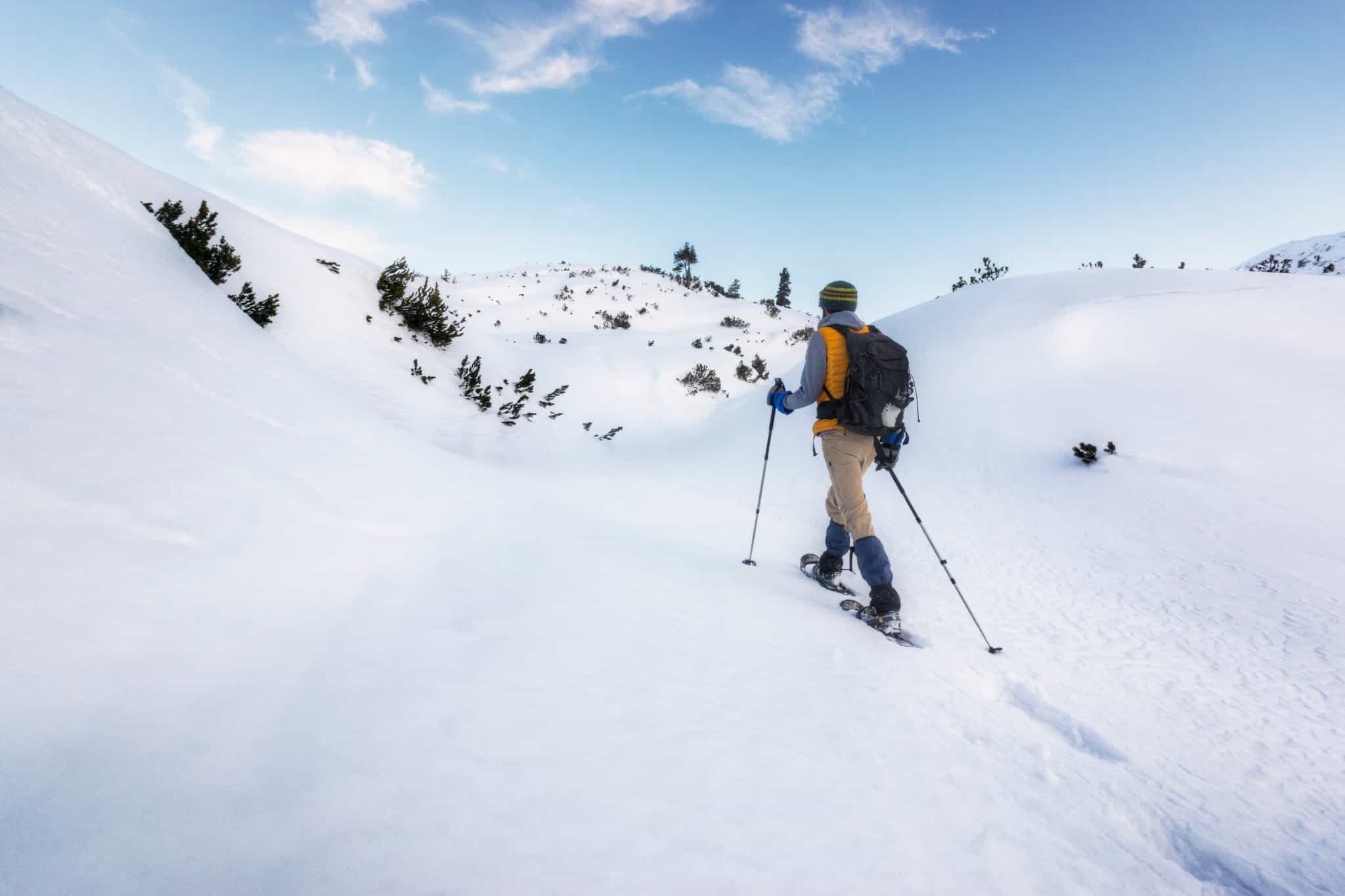
Winter Hiking and Survival Skills in the Alps
Crunch through the snow to rustic mountain huts and learn how to survive while you’re up there
What's Included?
Small Like-minded Groups
Solo-friendly by design, join our small n’ sociable groups of up to 8 like-minded, active and outdoorsy people…
…
What's it like?

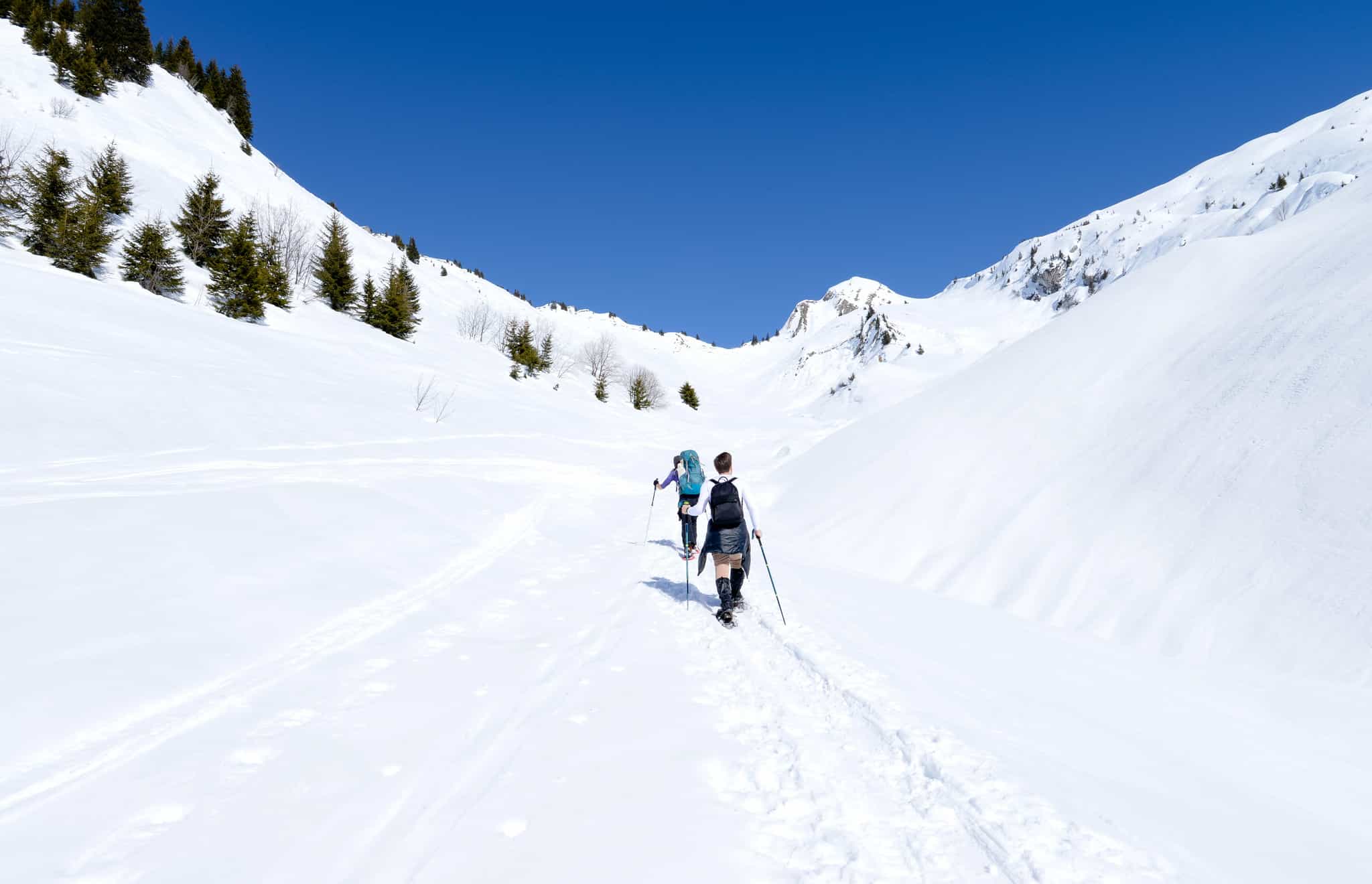
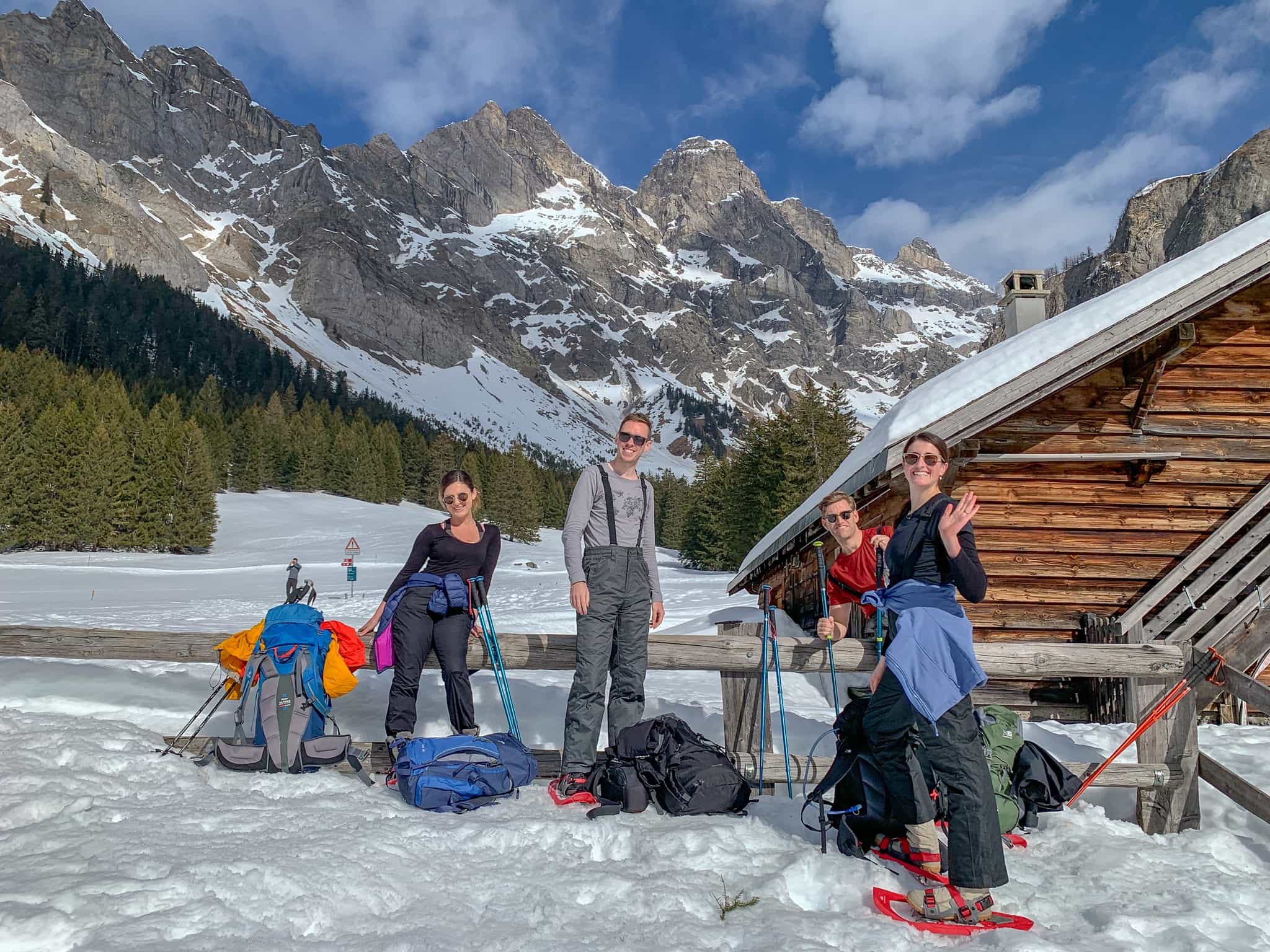
Hike into the wilderness through fresh powder fields and silent forests in the French and Swiss Alps
Hone your avalanche safety and mountain rescue moves with epic views over the Mont Blanc Valley
Sup mulled wine and munch fondue in a hidden igloo dome, in a forest, by a fire, under the stars
Key Information
Day 1
Arrive in Geneva, snowshoe to Loriaz refuge
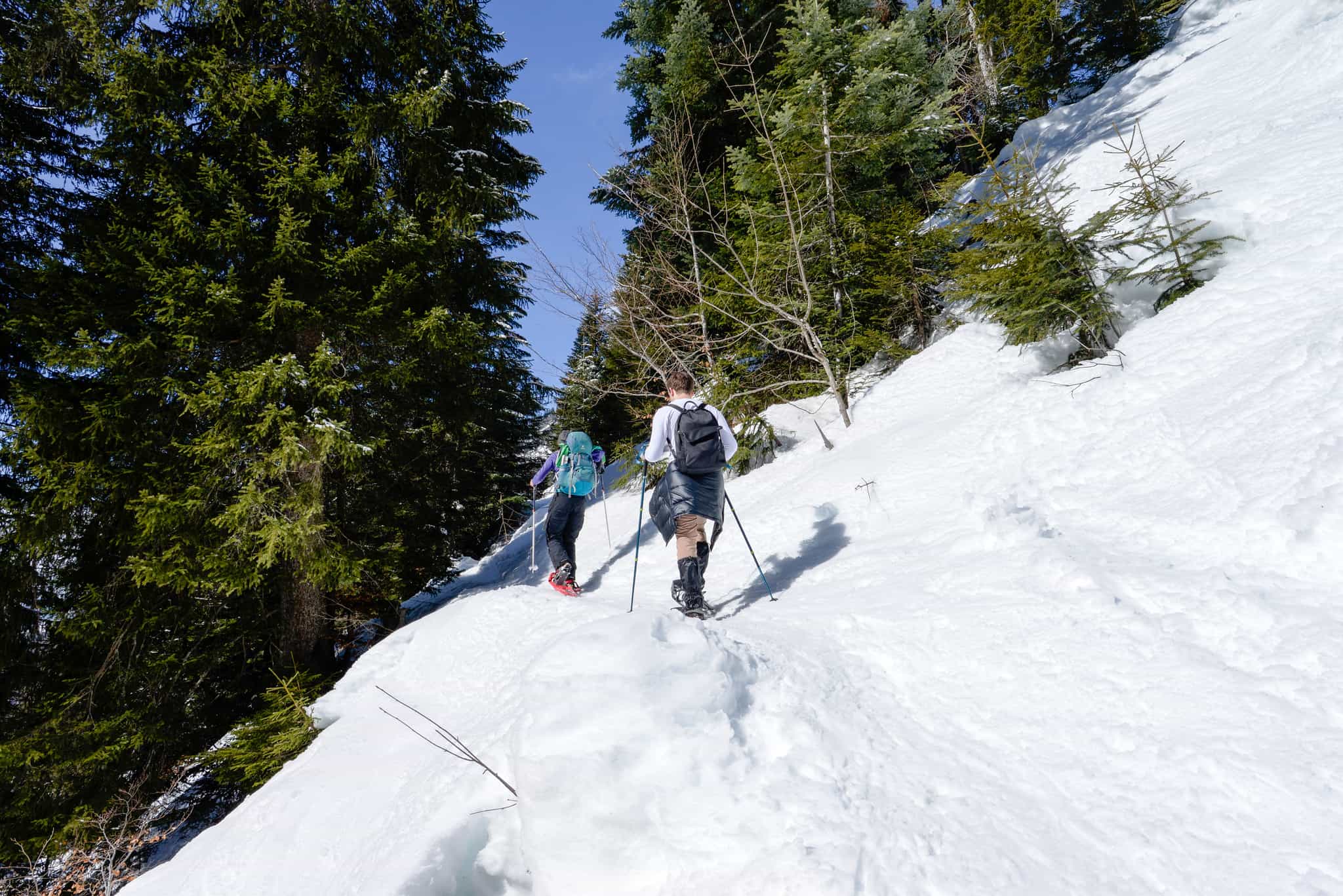
Driving
Snowshoeing
From the airport, your host will drive you to the Trient Valley near Chamonix. Your adventure begins from the small village of Vallorcine, where you'll get kitted out with snowshoes and poles and given a rundown of the adventure ahead. The first hike is a steep forest ascent before reaching open fields of fresh powder. You'll spend your first night in the wilderness in a cosy hut with good food and a well-earned drink.
Day 2
Hike on the Loriaz hills and learn winter skills
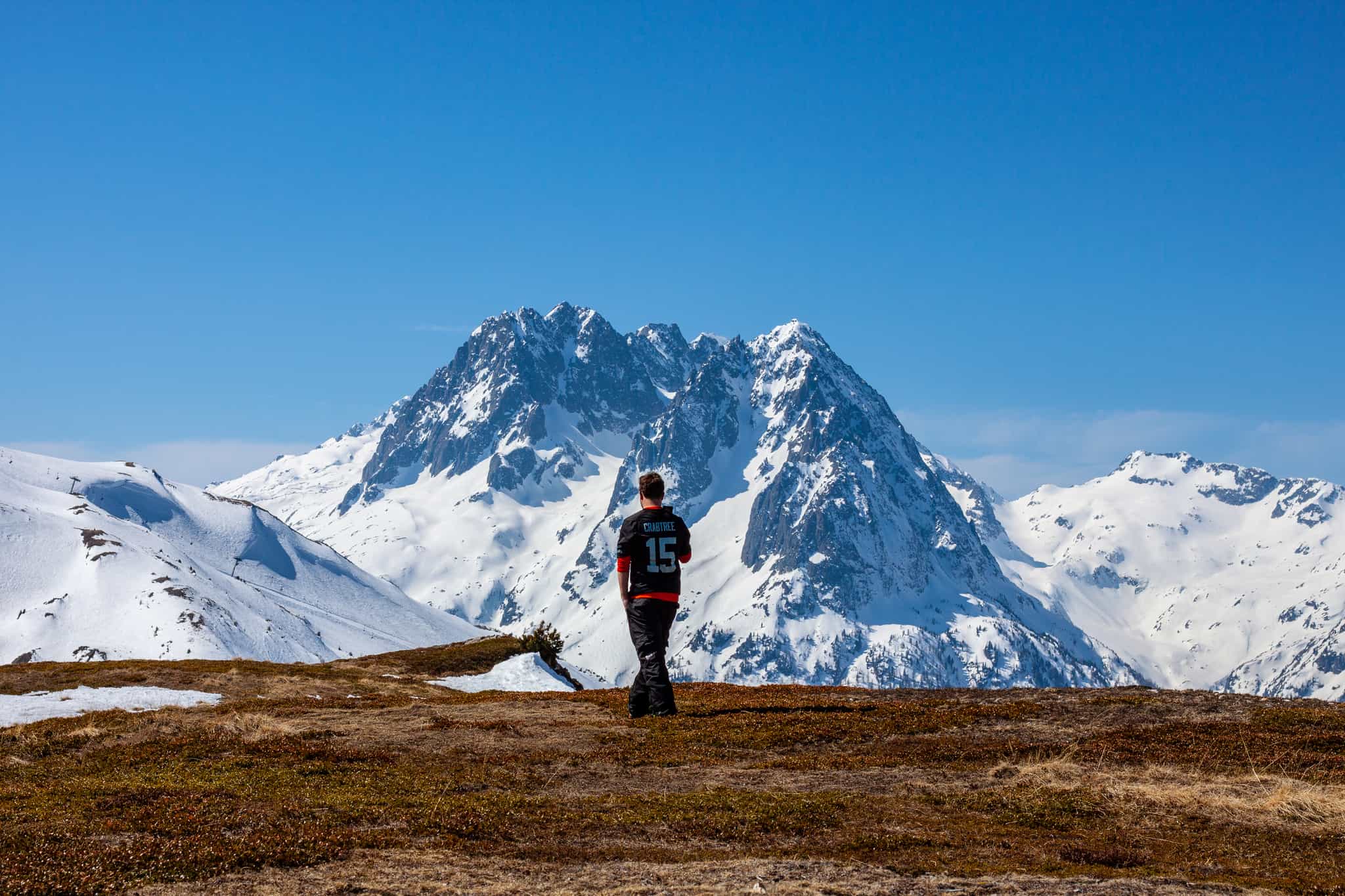
Snowshoeing
Clip your snowshoes back on to tackle the loop over to the Tête de la Chevrette, a vista over the Mont Blanc Valley with awesome views of the mighty Aiguille Vert and Aiguille du Dru. In the afternoon you'll begin your winter skills training. Hello transceiver, avalanche shovel and probe! You'll learn about snow and avalanches, first aid and mountain rescue methods. You'll also practice how to use the safety gear before road testing your new-found skills with a series of challenges. After a short hike and drive, you'll reach your cosy home for the night. Grab a hot shower before a slap-up meal of Swiss fondue, sausages and mulled wine set around and fire in an igloo dome, in the forest, under the stars.
Day 3
Soak up the solitude at the remote Cabane du Barraud
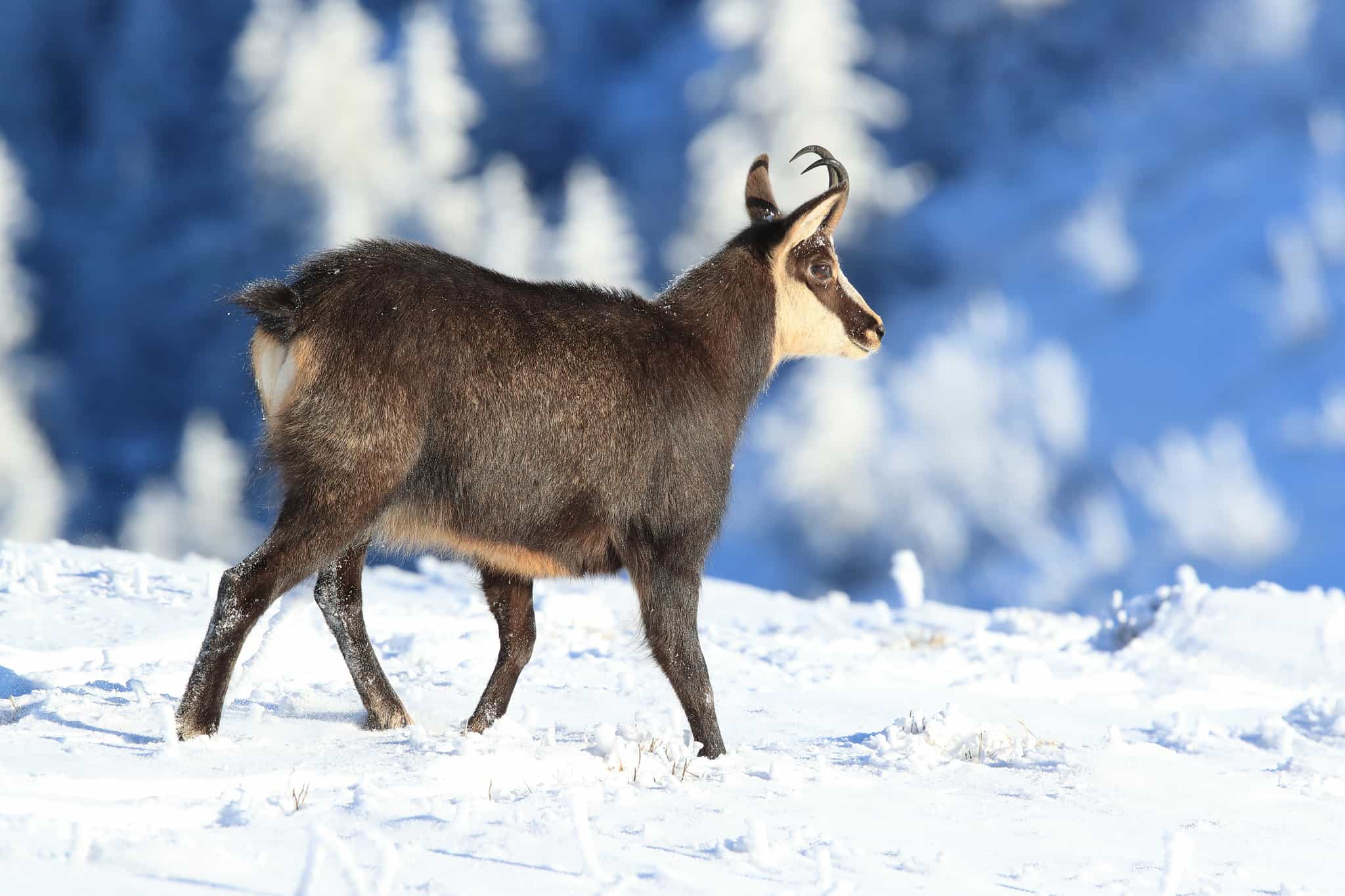
Snowshoeing
Hop back in the van for a short drive to the trailhead at Gryon. It's a real team effort out in the wilderness today. Start with an easy and gradual ascent up to Solalex, a picturesque mountain hut where you'll top for drinks. Next up is the remote Anzeinde Valley. Keep your eyes open for chamois! The hike ends at the Cabane du Barraud where you'll help chop wood, make a fire, melt snow to drink, prepare dinner and arrange the sleeping quarters before relaxing into the evening.
Day 4
Hike back to civilisation
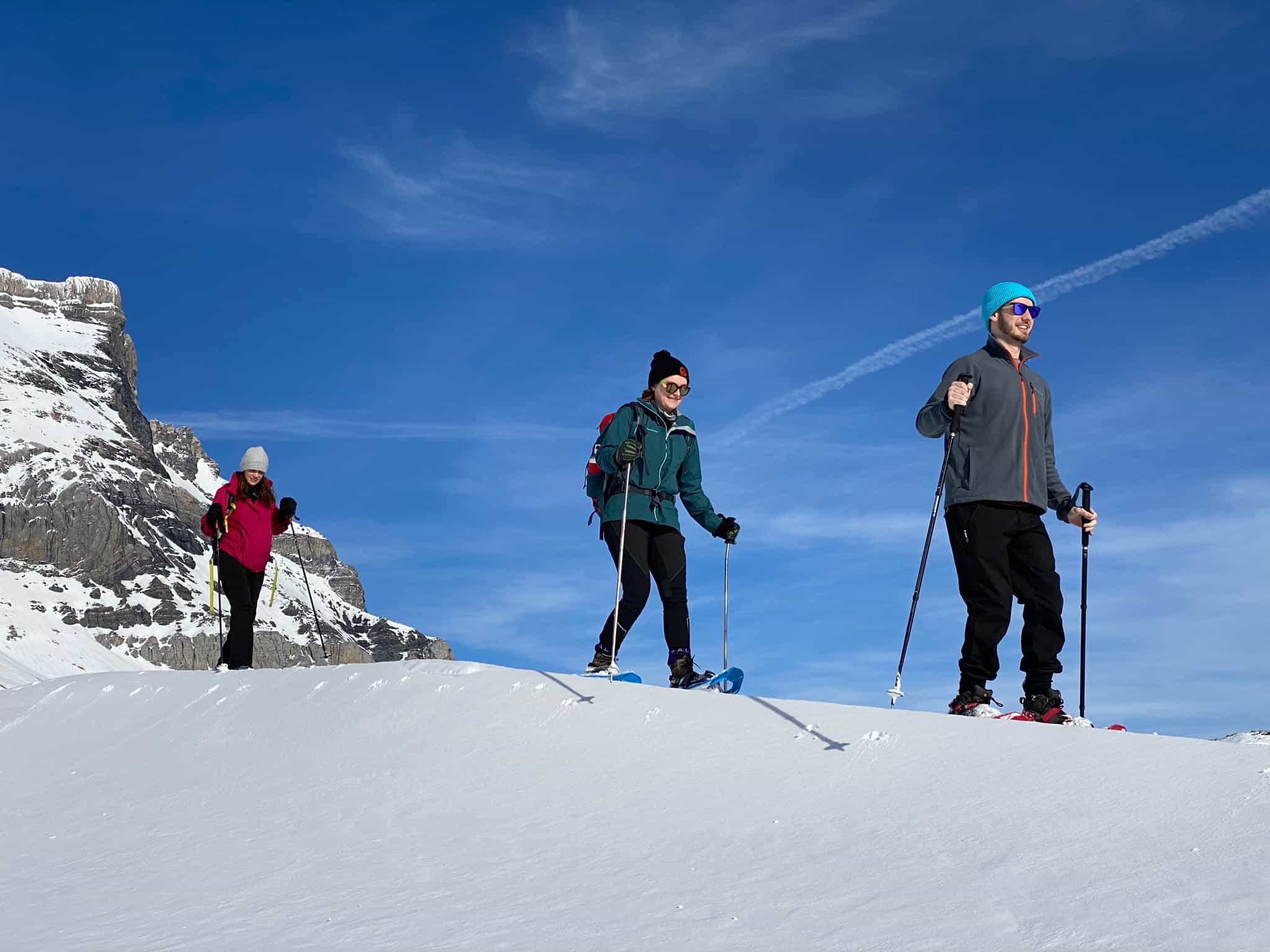
Snowshoeing
After a cosy night, you’ll help prepare a proper breakfast, pack and get ready for your last day in snowshoes. Today you'll scale the stunning Pas de Cheville; a mountain pass with magnificent views of the Les Diablerets range. If the weather's good you’ll be able to see the famous Matterhorn in the distance! Following a different path back down to Solalex hut, you'll retrace your steps to yesterday's trailhead where your snowshoeing adventure sadly comes to an end. Your host will transfer you to the airport by 15:00, ready for any flight departing after 16:30.
The Area
Logistics
Starts
Geneva International Airport, Switzerland
11:30
Ends
Geneva International Airport, Switzerland
15:00
Transfers
Your host will meet you at 11:30 at Geneva Airport ready for the transfer to the start point of the adventure. You should book a flight or train that arrives at the airport no later than 11:00.
Your return transfer will arrive at Geneva Airport at around 15:00 pm on Day 4, so you'll need to book flights or onward train travel departing from 16:30 onwards.
Travel options
You can fly into Geneva Airport (GVA) from various European origin points.
For those who wish to avoid flying, Geneva Airport is easily accessible by train via various routes across Europe. For example, take the Eurostar from London to Paris and then connect to a number of direct lines or an overnight sleeper train from Paris to Geneva and on to the airport train station.
Day 1
Breakfast
Lunch
Dinner
Day 2
Breakfast
Lunch
Dinner
Day 3
Breakfast
Lunch
Dinner
Day 4
Breakfast
Lunch
Dinner
What is the food like?
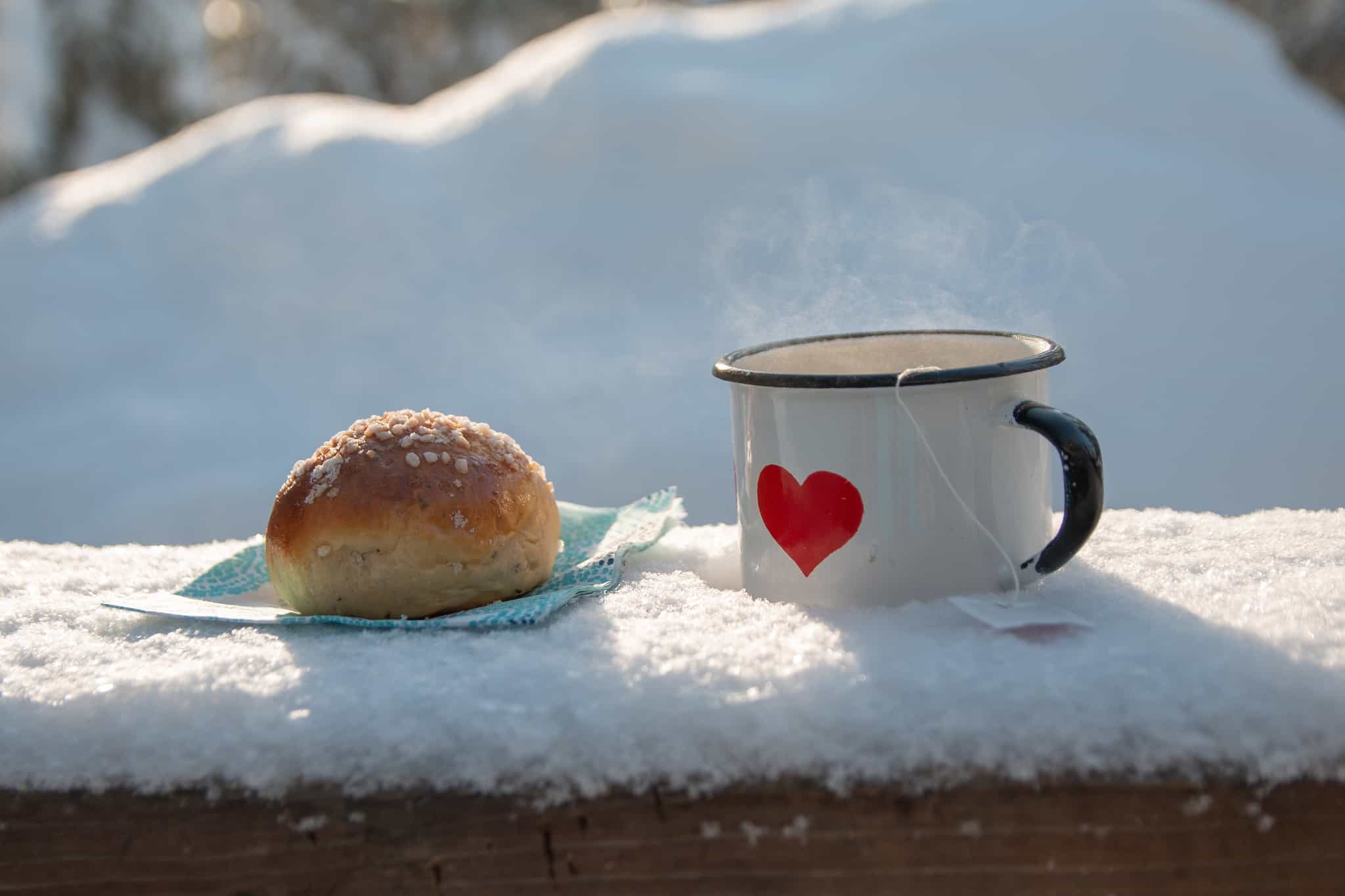
Breakfasts always include coffee, bread, jam and butter, and, depending on the mountain hut, may also include orange juice, cereal, yoghurt, fruit, cheese and meats. Dinners are hearty, warming and served in large portions to keep you well fuelled for the trip. Typical meals include a soup starter, a main course of meat and veg with a side of grains or pasta, and a dessert such as vanilla pudding or crème brûlée. Picnic lunches will be provided each day, with a sandwich or wrap, salad, and a selection of fruit, muesli bars, chocolate and nuts etc.
On the evening of day two, you'll eat out under the stars in an igloo dome, tucking into Swiss cheese fondue, mulled wine and sausages around an open fire.
Vegetarian, vegan, and most other dietary requirements can be catered for. Just let your host know when booking.
What is the accommodation like?
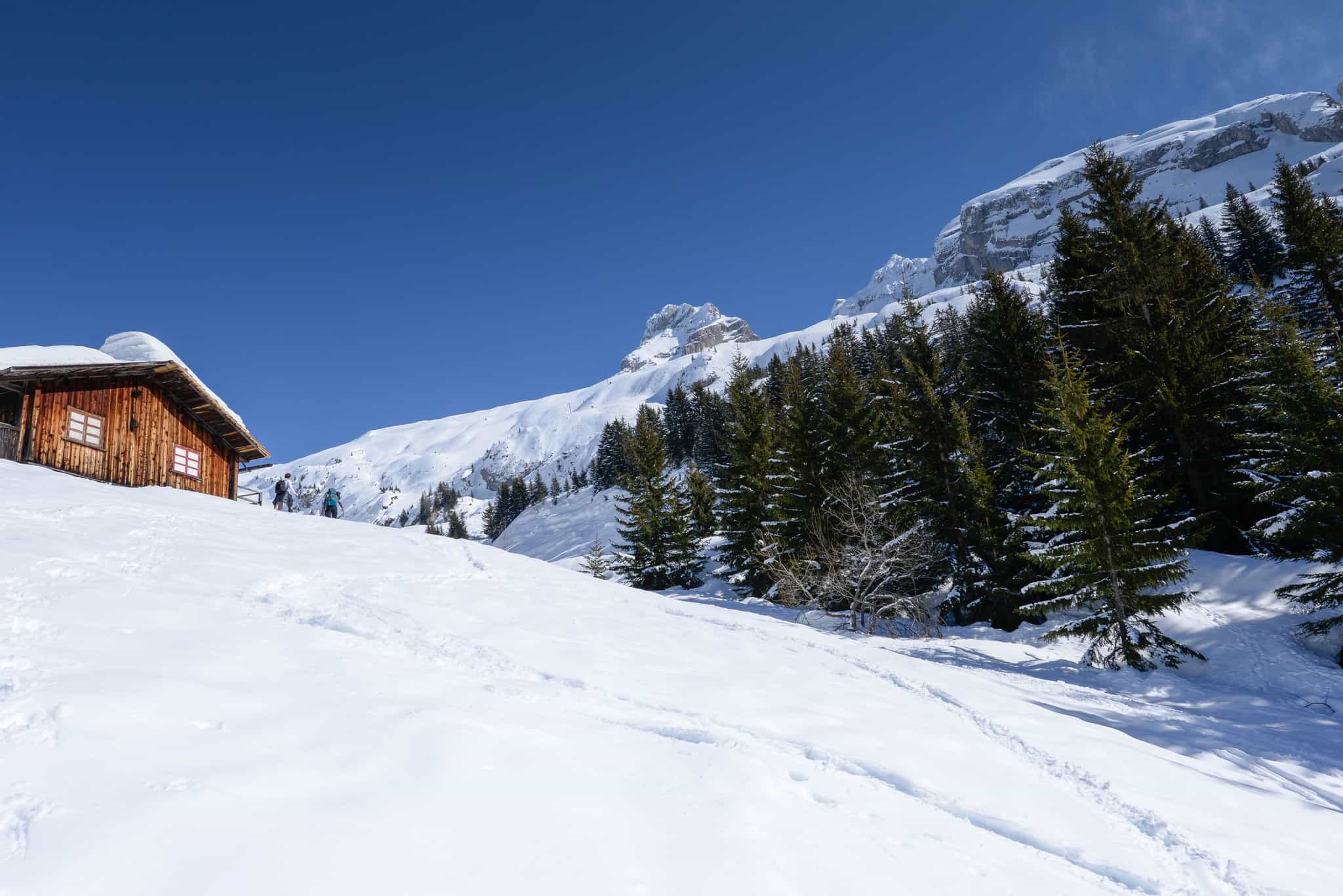
Chalets du Loriaz
A cosy mountain hut with a dining area and open fire. The hut has toilets and running water, though no showers. The hut accommodates up to 18 people in mixed-dorm style with mattresses, pillows and blankets provided. The dormitory is heated so you won’t need to bring a sleeping bag (though bringing a liner will provide some extra comfort). There is a small bar where you can grab a beer or some wine for the evening.
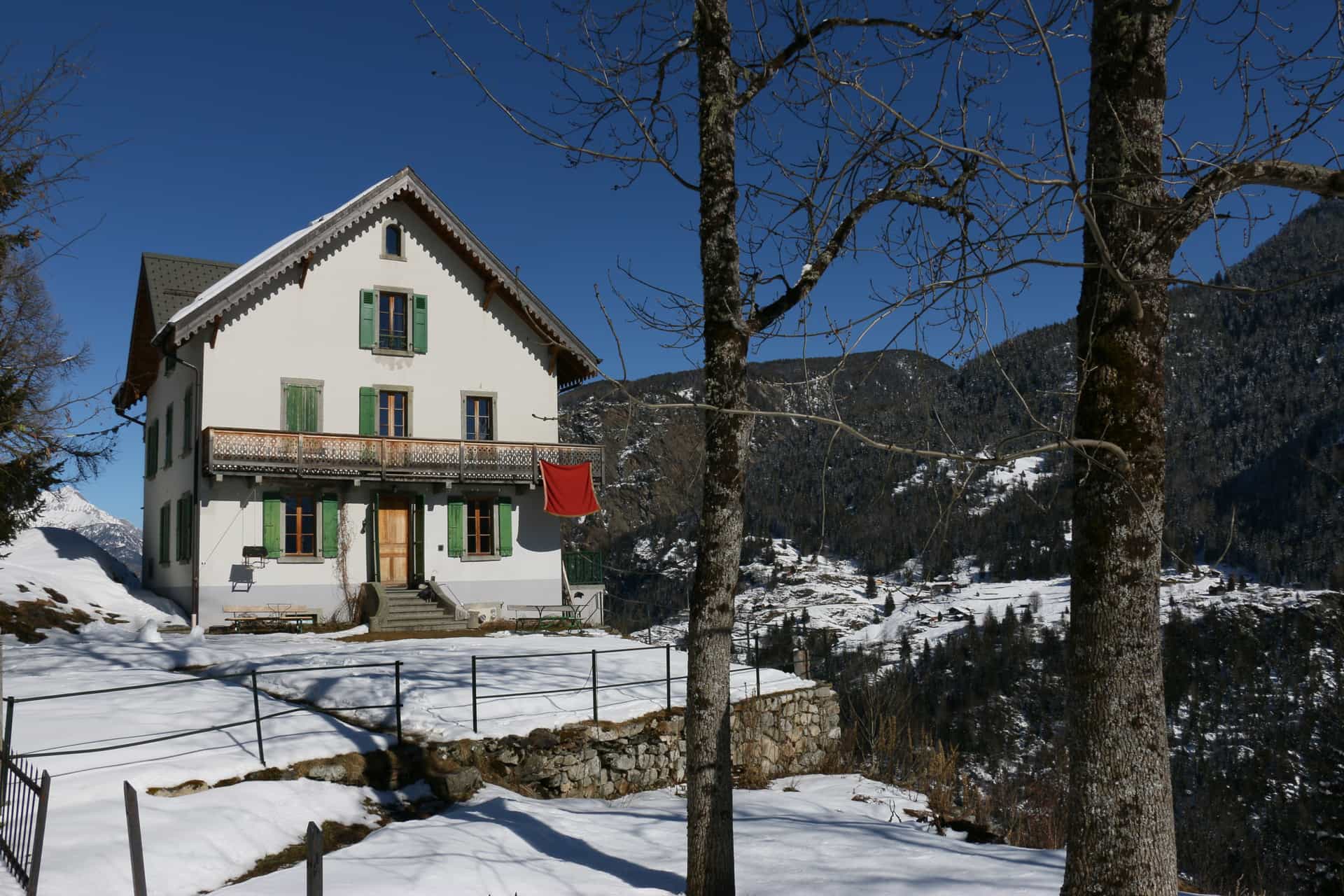
Gîte La Casita
On day two you'll stay at Gîte La Casita, a guesthouse nestled in a quiet mountain village, which provides a cosy refuge for hikers, cyclists and skiers throughout the year. The house was built in 1900 and renovated in 2006 with twin share rooms with shared bathroom facilities. You'll appreciate the hot showers here after your day of winter skills on the Loriaz hills.
If the Gîte is not available, your alternative accommodation will be at L'hôtel du Col de la Forclaz, a 6th generation family-owned hotel on a mountain pass.
Upgrades
Unfortunately, private room upgrades are not available due to the nature of the accommodation on this trip.
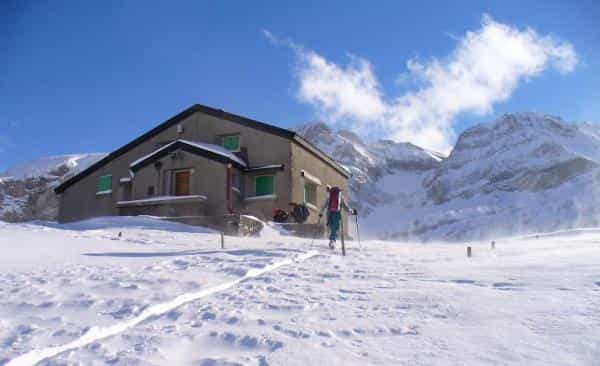
Cabane Barraud
Another cosy alpine mountain hut awaits you at Cabane Barraud, but be prepared to muck in. You'll need to carry food up, chop wood, help get the fire and stove going, and prep the dorm for sleeping. Again you'll sleep in a mixed dormitory with blankets and pillows provided.
We’re still waiting to collect any reviews from other travellers on this trip. However, all our hosts go through an extensive vetting process to ensure that your adventure is awesome.
Guides
Professional, friendly and experienced English-speaking guides
Accommodation
2 nights in mountain huts, 1 night in a guesthouse
Meals
3 breakfasts, 4 lunches, 3 dinners
Transfers
Transfers to and from Geneva airport
Equipment
Snowshoes & poles
Our trips are hassle-free by design. We include all the activities and equipment, as well as many of the meals, so you can simply rock up with your rucksack and share the adventure with your new pals.
Personal Expenses
You know your own spending habits best, so please budget an appropriate amount for things like optional meals and drinks, shopping, optional activities, and laundry.
Which pieces of kit are included in the trip cost?
- Snowshoes
- Hiking poles
- Head torch
- Sledge
- Avalanche transceiver
What do I need to bring?
Bags
- 20-30 litre backpack
- Small dry bag for phone and electrical items
- Waterproof cover/liner
Clothes
- Strong and waterproof hiking boots with a high ankle
- Hooded mountain jacket - windproof, waterproof (gore-tex best) and breathable
- Mountain trousers - windproof, ideally waterproof and breathable
- Good-quality down or synthetic jacket
- Fleece jacket or similar
- Good quality thermal baselayers. Wool is best, especially merino
- Balaclava, face mask or buff for protection against cold & wind
- Thick & warm hat x 2
- 2-3 pairs of thermal waterproof and ideally windproof gloves
- Snow/ski goggles
- Underwear
- Thermal mountain socks with heavy insulation
- Something to sleep in
- Additional warm, comfortable clothes for the evenings in the mountain huts
- Change of footwear for relaxing at the huts
Other
- Sleeping bag liner
- Sunglasses
- Padlock for left luggage
- Universal travel plug adapter
- Power bank or solar charger
- Passports (and visas)
- Travel Insurance documents
- Earplugs
- Suncream
- Personal first-aid kit (including blister treatment)
- Personal items (biodegradable toiletries, sanitary wear etc)
- Quick-dry towel
- Alcohol hand-gel
- Reusable water bottle x1 litre (two if you have room)
- Biodegradable wet-wipes
- Energy bars and snacks
No optional extras are available for this trip.
We partner with the World Land Trust to ensure this trip achieves Net-Zero emissions. We also support their Buy an Acre programme, helping local communities to buy and protect natural habitats in perpetuity.
What's the number?
It works out on average at 60kg of CO2 emissions per person, including all local transport, accommodation, food, activities, guides, staff and office operations.
The only thing it doesn’t include right now is flights and travel to the destination. We do make an overall estimate across all our customers separately, but as we don’t book flights, have customers from all corners of the world, and no way of reliably knowing their travel plans, we simply can’t include an individual number in the figure on display here. We’ve got a goal to fix that, so that when you book, there is a way to measure and mitigate the carbon emitted by your flight too.
But what does the number mean?
Yep, hard to picture eh? To give you an idea:
- Driving 1000 miles/1609km would be approximately 281kg of CO2 in an average car (or 140.5kg per person, if there were two of you in it).
- A return economy class flight between London and New York would be approximately 1619kg (1.66 tonnes) per person.
- 10 trees in a temperate forest are estimated to remove approximately 250kg of CO2 from the air in a period of 5-10 years.
What are we doing about it?
Our trips are relatively low-carbon by design, and we're working with all our hosts to develop long term carbon reduction plans. We partner with the World Land Trust to ensure this trip achieves Net-Zero emissions. We also support their Buy an Acre programme, helping local communities to buy and protect natural habitats in perpetuity, ensuring the protection of the reserve and its wildlife.
Want to know more?
Amazingly, no international travel company has ever publicly published their carbon measurements before, as far as we know. We believe that must change, quickly. So we’re openly sharing the method we used in the hope that other companies will be able to more easily follow suit and build on what we've done so far. You'll find it all here.
Snowshoeing is a type of hiking that uses a special type of footwear - a snowshoe - to spread your weight over a larger area, allowing you to move easily across powdery snow-covered terrain. While today's snowshoes look modern, snowshoeing has actually played a vital role in Arctic life for centuries, with traders and trappers using wooden versions to move freely through the wilderness.
Snowshoeing is incredibly easy, comfortable and safe. You simply clip your snowshoe to the outside of your hiking boot and off you go. You'll be in the hands of local, experienced, and trained guides who know the area intimately and will guide you safely throughout the hike.
It is important that you pack the right type of boots to fit the crampons that will be provided. You will need a warm winter mountaineering boot, ideally B2 crampon compatible or hybrid (i.e. Scarpa Manta or Charmoz). Full plastic double boots are not required and are likely to be uncomfortable for most of the terrain encountered. You can read more about crampons and selecting the right boots here.
For those wanting to arrive a day or two early or extend their trip at the end - your host is happy to help arrange pre or post-trip accommodation in Geneva on your behalf, with the price and style depending on availability and your budget.
Private transfers can be arranged, however, these are very expensive, so we recommend taking public transportation from Geneva Airport or from the train station to your pre-trip accommodation. Public transport in Switzerland is easy and straight forward to navigate, and air travellers to Geneva Airport can take advantage of free public transport into the city.
Yes! Any extra kit or luggage you have with you can be safely left with your local host at the start of the trip. You'll carry your own bag up to the mountain hut for the night so we recommend packing light and aiming for a bag weighing no more than 8kg.
Sure can! Over 70% of our travellers travel solo, it’s a great way to meet like-minded people.
Our team of Adventure Hunters co-create exclusive adventures which are run by highly vetted, specialist hosts. The trip is run by our trusted host partner in the destination. We only work with independent, local, in-destination experts who know the very best places to explore and how to stay safe. Read more information about the local teams we partner with. You’ll be introduced to the host straight after making a booking via the Much Better Adventures platform.
Much Better Adventures refer to the UK Government’s official travel advice when designing trips and monitoring trip operations. We recommend that all customers are familiar with the practical information provided on the Government’s FCDO website, where current travel advice can be found by searching for the applicable destination(s).
For customers joining this trip from other international destinations – please also read the official travel advice applicable to your country of residence/origin, as this may differ.
We recommend checking out the country-specific information and also talking to a travel nurse.
We automatically convert prices from the local currency that a host receives to your chosen currency. We update our exchange rates on a daily basis so this does mean that prices displayed on the site are subject to currency fluctuations, which is why you may see them change over time.
If you wish to change the currency you pay in, head to the bottom of the page.
All of our group adventures are specially designed for adults to enjoy as we want these adventures to bring together outdoorsy people who are truly like-minded. You must be over 18 to join one of our trips.
You're always in good company on one of our adventures.
Our trips are typically made up of a mixture of solo travellers and small groups of 2 or 3 friends, with most in their 30s-50s.
Our sociable adventures are solo-friendly by design and naturally attract outdoorsy people with a shared mindset; a love for adventure, a desire to push themselves and meet awesome, like-minded people along the way.
It’s this camaraderie that has so often turned a great adventure into a life-changing one.
Don't just take our word for it:
- 95% of people rate the group dynamics on our trips 5/5
- 90% of people recommend joining a trip to make new friends
- 75% of people have met people on our trips that they would now consider friends
See here for more info about the Much Better Adventures tribe.
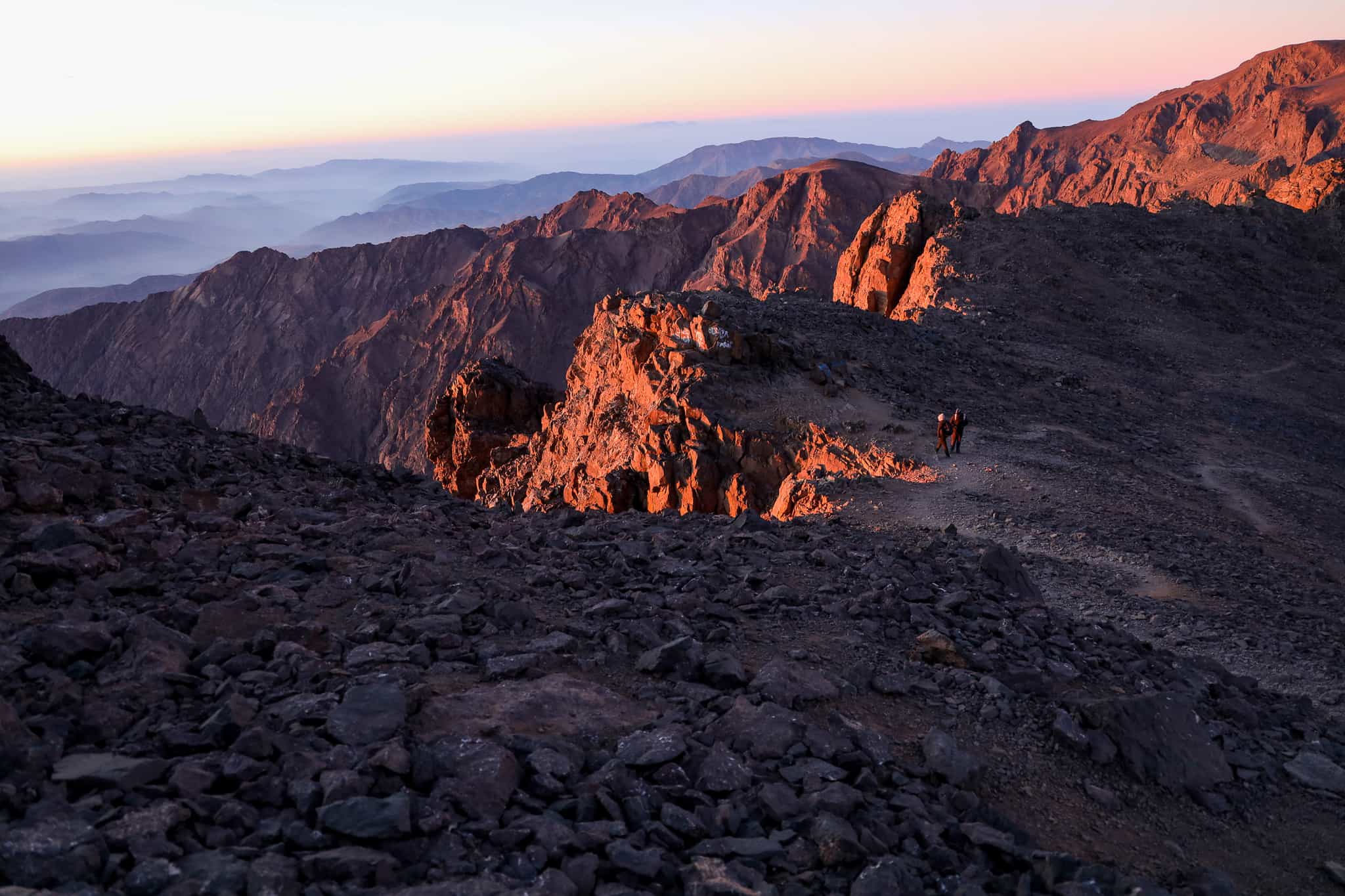
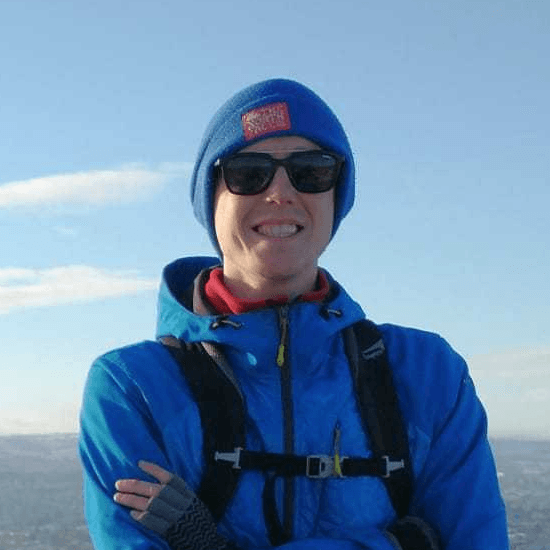
Need help finding flights?
From logistics and how to get there, to fitness, group dynamic and trip difficulty, Rory and his team of friendly experts are on hand to help.
We've got your back
Guaranteed to run
All Much Better Adventures trips are now guaranteed to run. Once you’ve booked your spot you can immediately make your travel arrangements, no uncertainty, no hanging about (excludes 'request to book' departures). Full details
Flexible payments
Secure your spot with the minimum deposit and pay off the remaining balance in as many instalments as you like, with no interest or fees. Full details
Happiness Guarantee
We’re so confident you’ll have an amazing time we’ll put our money on it. Full details
Full financial protection
To give you complete peace of mind Much Better Adventures is backed by ABTOT, ABTA and ATOL memberships. Full details
Tried & Trusted
Much Better Adventures is rated ‘Excellent’ on Trustpilot with over 1000 verified trip reviews averaging 4.8/5.
Connect before you go
You'll be invited to join a WhatsApp group to get to know each other before your big adventure together. Full details
DEPARTURE DATES





